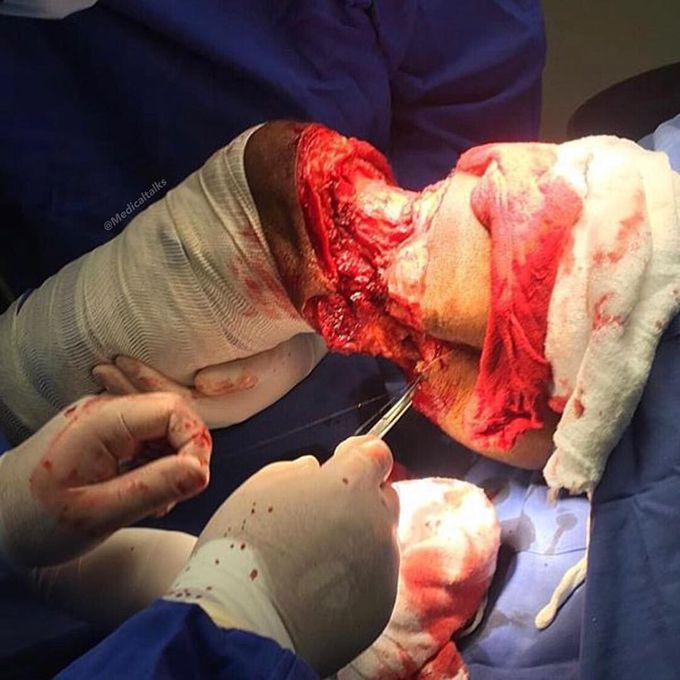


Above-the-knee leg amputation
Above-the-knee leg amputation on a 57-year-old patient who had a 6 years history of diabetes which was complicated with atherosclerosis of the lower limb and eventually lead to an irreversible gangrene. The leading indication for limb amputation is ischemic disease such as a peripheral vascular disease or PVD for short (a severe disease of the circulation such as an atherosclerotic process), primarily in elderly persons with diabetes mellitus, who often experience peripheral neuropathy that progresses to trophic ulcers and subsequent gangrene and osteomyelitis. Limb removal for PVD is performed for uncontrollable soft-tissue or bone infection, nonreconstructable disease with persistent tissue loss, or unrelenting rest pain due to muscle ischemia. Foot or leg ulcers may develop due to diabetes and not heal. They may become infected, and the infection may spread to the bone and become severe enough to be life threatening. The surgical decision in that case is an above-knee amputation, which is performed when lower-level surgery is prohibited in order to remove the diseased tissue and prevent further spread of infection. Although a diseased limb can be removed quite readily, resolving the problem of the extremity, the care does not end there. The surgery must be performed well to ensure that the patient is able to wear a prosthesis comfortably.
Hemodynamic stimuli&nonhemodynamic stimuliEffects of sugar on teeth

